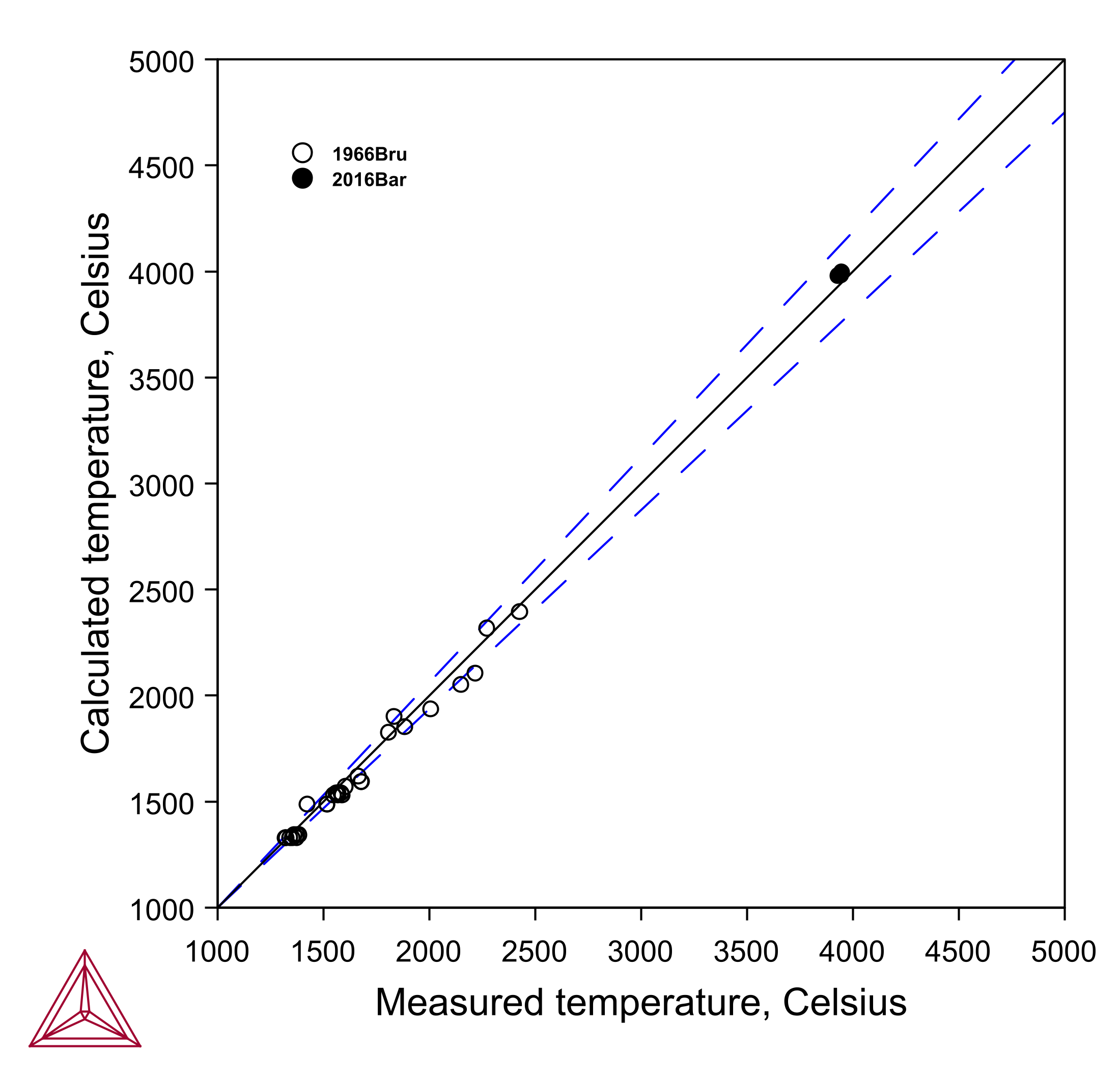Melting Temperature Predictions
Melting temperature is one of the important properties for ultra-high temperature materials. The TCS Ultra-high Temperature Materials Database (TCUHTM) can be used to predict the phase transformation temperatures as a function of the chemical composition of typical industrial materials, including solidus and liquidus temperatures. This example shows the comparison of calculated and measured incipient melting temperatures and liquidus temperatures. The melting temperatures significantly decrease when silicates form. In most cases, the differences between measurements and the calculation are less than 5%.
References
[1966Bru] C.E. Brukl and D.P. Harmon: “Ternary Phase Equilibria in Transition Metal-Boron-Carbon-Silicon Systems; Part II. Ternary Systems. Vol. 4. The Ti-Zr-C, Ti-Hf-C and Zr-Hf-C Systems,” Tech. Rep. AFML-TR-65-2, Part II. Vol X, Air Force Materials Laboratory, Wright Patterson Air Force Base, OH, 1966.
[2016Bar] O. Cedillos-Barraza, D. Manara, K. Boboridis, T. Watkins, S. Grasso, D. D. Jayaseelan, R. J. M. Konings, M. J. Reece, W. E. Lee, Investigating the highest melting temperature materials: A laser melting study of the TaC-HfC system. Sci. Rep. 6, 37962 (2016).
